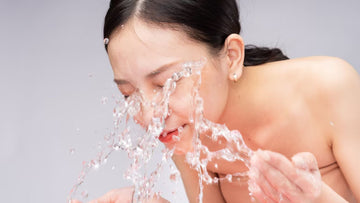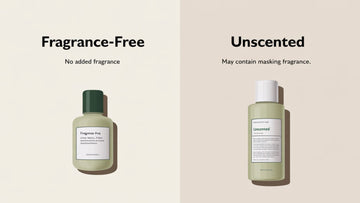Washing your face is one of the most basic steps in any skincare routine. But what happens when your face wash is doing more harm than good? If you’ve noticed tightness, flaking, redness, or a rough texture after cleansing, your face wash might be drying out your skin. Don’t worry—you’re not alone, and the solution is easier than you think.
In this blog, we’ll uncover why some face washes strip your skin, the signs to watch out for, and what you can do to restore moisture and maintain healthy, balanced skin.
Why Face Wash Can Dry Out Your Skin
It’s easy to assume that face washes are all the same, but not all cleansers are created equal. Some are loaded with harsh ingredients that can disrupt your skin’s natural barrier. Here are a few common reasons why your face wash might be drying out your skin:
1. Harsh Surfactants
Many conventional face washes use sulfates, like sodium lauryl sulfate or sodium laureth sulfate, as foaming agents. While they help create a rich lather, these ingredients can strip away your skin’s natural oils, leaving it dry and unprotected.
2. High pH Levels
Your skin has a naturally slightly acidic pH (around 4.5 to 5.5). Face washes with high pH levels (above 7) can disrupt this balance, making your skin more prone to dryness, irritation, and even breakouts.
3. Over-Cleansing
Washing your face too often—especially more than twice a day—can remove the protective oils your skin needs to stay hydrated. Even the best face wash can cause dryness if overused.
4. Wrong Type for Your Skin
Using a product meant for oily or acne-prone skin when you have dry or sensitive skin can backfire. Ingredients like salicylic acid or benzoyl peroxide are great for treating acne, but may be too drying for other skin types.
Signs Your Face Wash is Too Harsh
Sometimes, it’s not obvious that your cleanser is the problem. Here are a few signs your face wash may be drying you out:
-
Tightness or pulling sensation after washing
-
Flaking or visible dry patches
-
Redness or inflammation
-
Itching or irritation
-
Increased sensitivity to other skincare products
-
A dull, rough texture
If you’re experiencing one or more of these symptoms, it may be time to rethink your current cleanser.
What To Do If Your Face Wash Is Drying Out Your Skin
Now that you’ve identified the issue, let’s look at the steps you can take to repair and rebalance your skin.
1. Switch to a Gentle Cleanser
The first and most important step is to replace your current face wash with a gentler option. Look for cleansers that are labeled:
-
Hydrating or moisturizing
-
Fragrance-free
-
Sulfate-free
-
pH-balanced
Ingredients to look for include:
-
Glycerin
-
Hyaluronic acid
-
Ceramides
-
Aloe vera
-
Niacinamide
These ingredients help retain moisture and soothe the skin, rather than stripping it.
2. Cut Back on Cleansing Frequency
Unless you’re extremely oily or wear heavy makeup, cleansing twice a day might be too much. Consider washing your face only in the evening and rinsing with water in the morning. This prevents over-cleansing and helps preserve your skin’s natural oils.
3. Avoid Hot Water
Hot water can break down your skin’s lipid barrier, causing more dryness. Instead, use lukewarm water when washing your face. It’s gentler and less likely to strip away the skin’s natural moisture.
4. Apply Moisturizer Immediately After Cleansing
Don’t wait until your skin starts to feel dry—moisturize right after patting your skin dry. Applying a moisturizer while your skin is still slightly damp helps lock in hydration. Choose a moisturizer that suits your skin type but includes ingredients like hyaluronic acid, ceramides, or squalane.
5. Introduce a Hydrating Serum or Toner
To give your skin an extra boost of hydration, incorporate a hydrating toner or serum into your routine. Toners with rose water, glycerin, or aloe can refresh and hydrate, while serums with hyaluronic acid draw moisture into the skin.
6. Use a Humidifier
If you live in a dry climate or spend a lot of time in air-conditioned environments, a humidifier can be a game-changer. It helps maintain optimal humidity levels in your home, which benefits your skin and overall health.
7. Skip Exfoliation—Temporarily
If your skin is already dry or irritated, put a pause on exfoliating. Both physical scrubs and chemical exfoliants can worsen dryness and increase sensitivity. Once your skin has recovered, you can reintroduce exfoliation—but only 1–2 times a week and with gentle products.
8. Protect Your Skin Barrier
A damaged skin barrier can make your skin more vulnerable to dryness. To repair and strengthen it, look for products with ceramides, fatty acids, and cholesterol. These ingredients mimic your skin’s natural components and help restore its protective function.
9. Avoid Alcohol-Based Products
Toners or cleansers that contain denatured alcohol or ethanol can be incredibly drying. Check the ingredient list and avoid products where alcohol appears near the top.
10. Check Your Other Skincare Products
Sometimes, it’s not just the face wash. Retinoids, acne treatments, and exfoliating acids like glycolic acid or salicylic acid can all contribute to dryness. If you’re using any of these, reduce the frequency or use a buffering technique by layering them over moisturizer.
Best Ingredients to Look For in a Face Wash for Dry Skin
If you’re ready to upgrade your cleanser, here are the top ingredients that help hydrate and nourish your skin:
-
Hyaluronic Acid: Binds water to the skin for lasting hydration.
-
Glycerin: A humectant that draws moisture into the skin.
-
Ceramides: Help restore the skin barrier.
-
Aloe Vera: Soothes and moisturizes.
-
Colloidal Oatmeal: Reduces irritation and retains moisture.
-
Squalane: A lightweight oil that hydrates without clogging pores.
Final Thoughts
It’s frustrating to follow a skincare routine and still feel like your skin is getting worse. But sometimes, the root of the problem is the most basic step: cleansing. If your face wash is drying out your skin, it’s important to stop, reassess, and make changes that will help restore your skin’s natural moisture balance.
The key takeaway? Be gentle. Hydrate often. Choose the right products for your skin type. And remember—healthy skin starts with the basics. Once your cleanser supports your skin’s needs instead of stripping it, you’ll start to see a more radiant, calm, and hydrated complexion.






